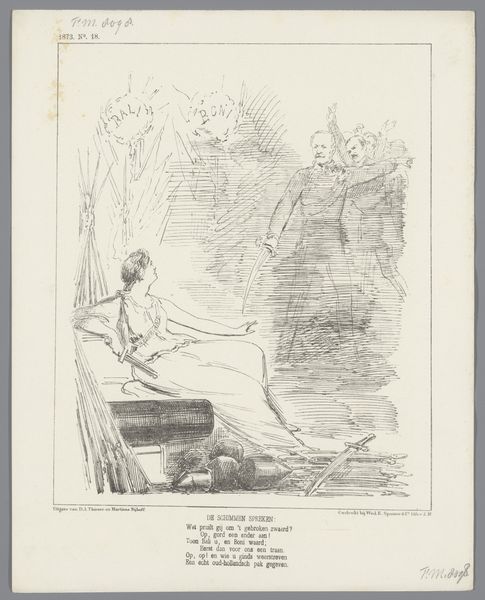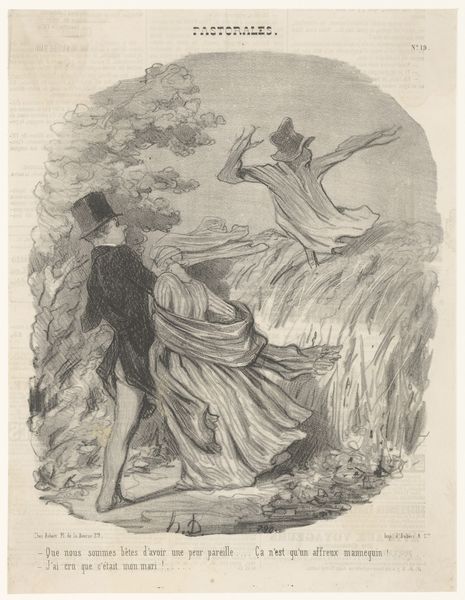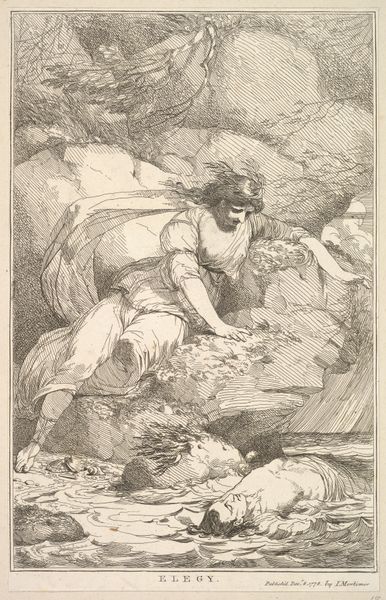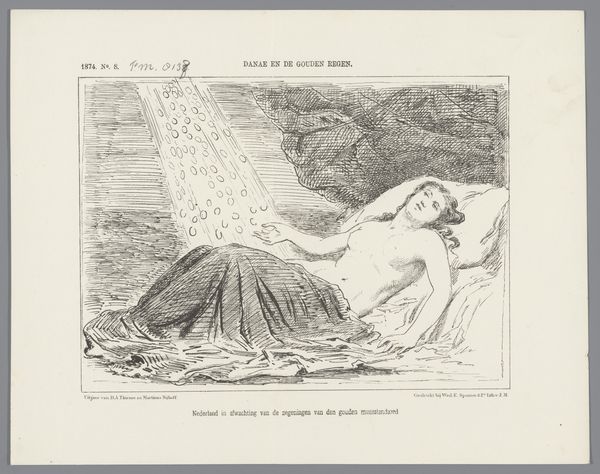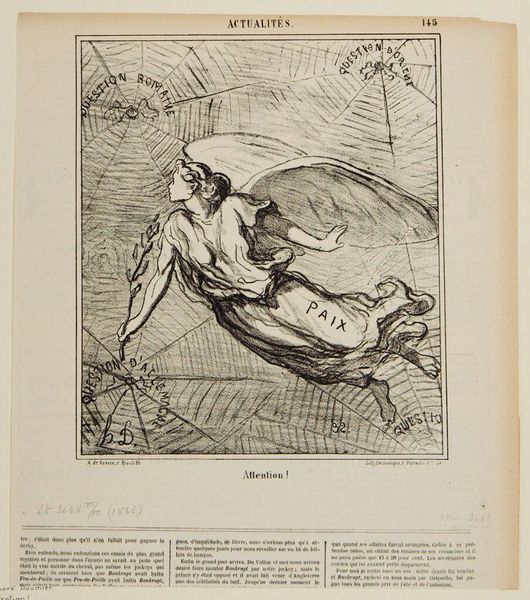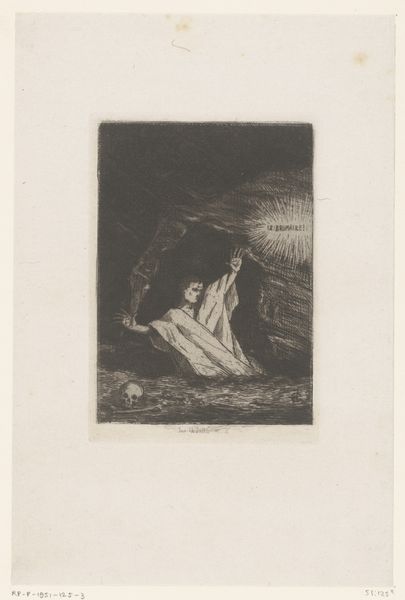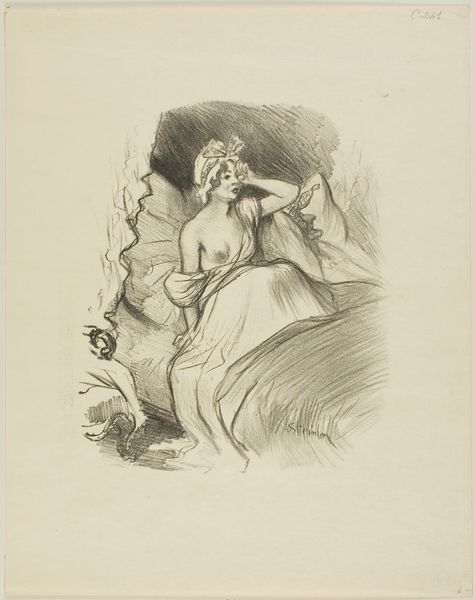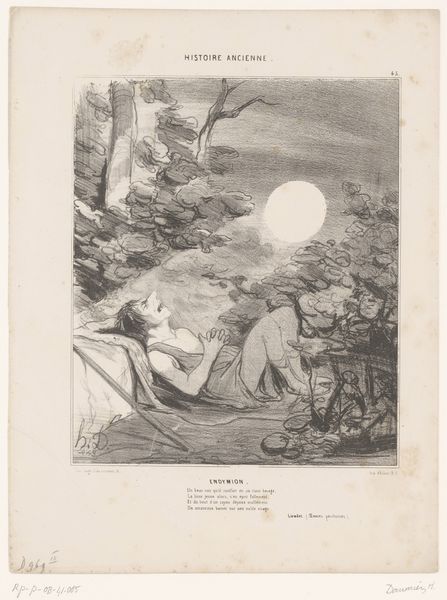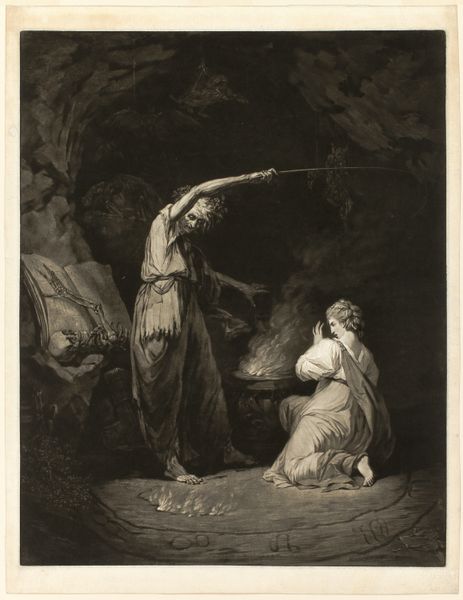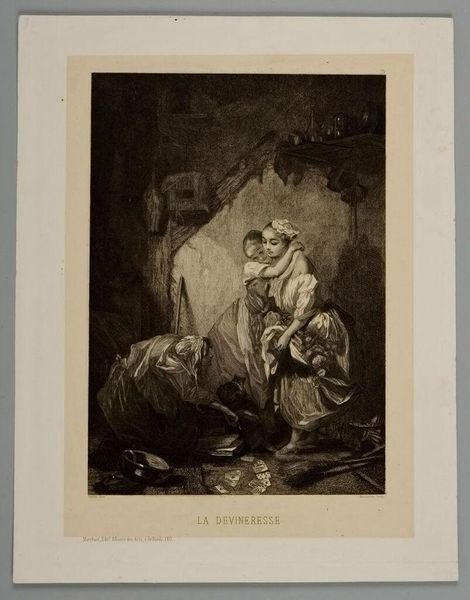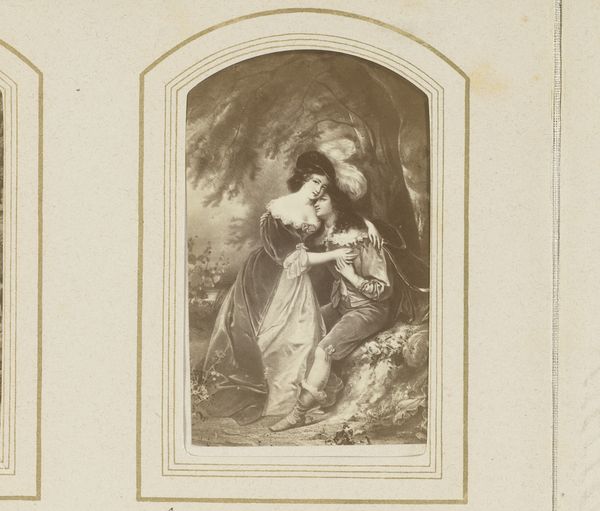
drawing, lithograph, print
#
drawing
#
narrative-art
#
lithograph
# print
#
caricature
#
figuration
#
romanticism
#
history-painting
Dimensions: height 361 mm, width 236 mm
Copyright: Rijks Museum: Open Domain
Editor: This is "Caricature of Achilles as a Baby," a lithograph drawing made in 1842 by Honoré Daumier, here at the Rijksmuseum. The scene seems so chaotic, with harsh lines depicting a mythical scene. What do you make of it? Curator: From a materialist perspective, I'm interested in how Daumier's choice of lithography, a relatively accessible printing technique at the time, democratized art production. How does mass production influence the accessibility, and therefore reception, of narratives that are historically limited to elites? Editor: That’s interesting. I hadn’t considered how the printing process itself affects who gets to see these stories! So, the material…it challenges traditional boundaries? Curator: Precisely! Lithography allowed for wider dissemination of these caricatures, reaching audiences beyond the traditional art patrons. Look at the lines and marks he makes; this allowed Daumier to critique societal norms and power structures using mass media. Consider the cultural context: 1842 was a time of social upheaval. Editor: How does that inform the message, then? Curator: It emphasizes the accessibility to a broader audience who have a similar means. So by employing lithography, Daumier essentially created art as a commodity, using it as a form of social commentary accessible to the very people he critiqued. It makes you question who can access knowledge through materials. Editor: I see now. I was caught up in the image, but thinking about lithography and who saw it when it was made gives me a whole new perspective on the work. Curator: Exactly. Analyzing the materials and their production opens up interpretations of historical contexts!
Comments
No comments
Be the first to comment and join the conversation on the ultimate creative platform.
